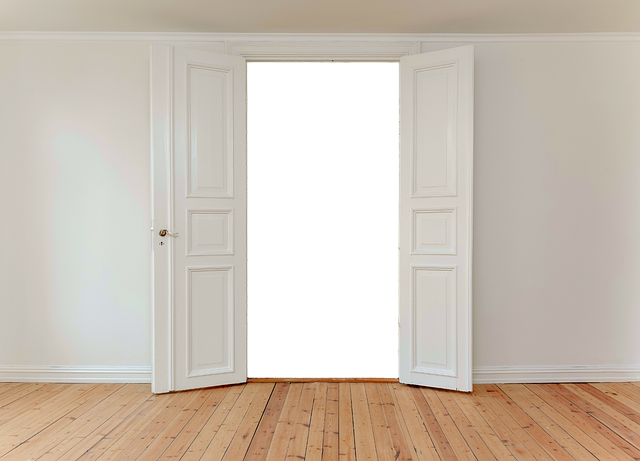ADA-Compliant Wheelchair-Friendly Door Installation: A Comprehensive Guide

The Americans with Disabilities Act (ADA) sets essential standards for wheelchair-friendly door inst…….
Introduction
Accessibility is not just a legal requirement but a fundamental aspect of inclusive design that enhances the quality of life for individuals with disabilities. ADA-Compliant Door Installation is a critical component in ensuring accessibility, compliance, and safety within buildings and facilities across the United States and beyond. This comprehensive article will delve into the intricacies of ADA-compliant door installation, its historical context, its significance, and its broader impact on society. By exploring various facets from economic considerations to technological advancements, policy frameworks, and real-world applications, readers will gain a deep understanding of this vital subject.
Understanding ADA-Compliant Door Installation
The Americans with Disabilities Act (ADA) of 1990 is a wide-ranging civil rights law aimed at ensuring accessibility for people with disabilities in all areas of public life, including door installation. An ADA-compliant door installation refers to the design and implementation of doors and hardware that meet specific requirements outlined by the ADA Standards for Accessible Design. These standards cover dimensions, clearance, operation mechanisms, and other critical aspects to ensure that individuals with disabilities have equal access.
The core components of an ADA-compliant door installation include:
Global Impact and Trends
While the ADA sets the standard in the United States, many countries have their own regulations governing accessible design. The principles of ADA-compliant door installation have had a global impact, influencing accessibility standards worldwide, such as the British Standard BS 8300 and the International Building Code (IBC).
Trends shaping the trajectory of ADA-compliant installations include:
Economic Considerations
The economic implications of ADA-compliant door installations are multifaceted. From a market perspective, there is a growing demand for accessible design solutions, presenting opportunities for innovation and entrepreneurship. Investment patterns reflect a shift towards inclusive design, not only due to legal requirements but also as part of corporate social responsibility initiatives.
Economically, ADA-compliant door installations:
Technological Advancements
Technology plays a pivotal role in advancing ADA-compliant door installations. Innovations such as automatic doors, motion sensors, and smart locks have transformed accessibility. These advancements not only improve the user experience but also offer greater security and convenience.
Future technological potential includes:
Policy and Regulation
The legislative landscape governing ADA-compliant door installation is complex, with various federal, state, and local regulations. The ADA Standards for Accessible Design provide detailed guidelines, which are regularly updated to reflect new technologies and best practices.
Key policies and regulations include:
These frameworks not only govern the installation but also its maintenance, ensuring that buildings remain accessible over time.
Challenges and Criticisms
Despite its widespread adoption, ADA-compliant door installation faces challenges and criticisms. Issues such as inadequate training for installers, cost constraints, and the need for ongoing maintenance can impede compliance. Additionally, there is criticism regarding the accessibility of some “compliant” designs that fail to consider the diverse needs of individuals with disabilities.
Strategies to overcome these challenges include:
Case Studies
Several case studies exemplify the successful application of ADA-compliant door installations. Notable examples include:
These case studies provide valuable insights into the practical application of ADA standards and the positive impact they can have on communities.
Conclusion
ADA-compliant door installations are a critical component of inclusive design, ensuring that individuals with disabilities have equal access to buildings, public spaces, and transportation. The economic, technological, and policy landscapes surrounding these installations are constantly evolving, driven by advancements, legal requirements, and societal values. As we look to the future, it is clear that ADA-compliant door installations will continue to be a focal point in the movement towards greater accessibility for all.

The Americans with Disabilities Act (ADA) sets essential standards for wheelchair-friendly door inst…….

Handicap-accessible door options, adhering to ADA guidelines, are crucial for inclusive design, ensu…….

ADA-compliant storm and security doors combine robust security with accessibility standards, ensurin…….

The Americans with Disabilities Act (ADA) imposes stringent rules for public spaces, emphasizing acc…….

Implementing ADA door requirements is crucial for creating safe and accessible public spaces, ensuri…….

The Americans with Disabilities Act (ADA) sets clear standards for making public spaces accessible,…….

Professional ADA door services are essential for creating inclusive spaces, ensuring easy access for…….

Integrating indoor spaces with outdoor patios using sliding or bi-fold doors requires adhering to AD…….

Professional ADA door services are vital for creating safe, accessible public spaces, specializing i…….

The Americans with Disabilities Act (ADA) sets specific standards for public space accessibility, in…….